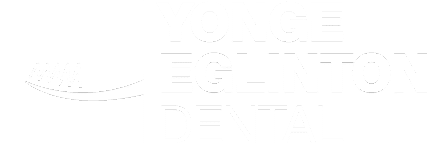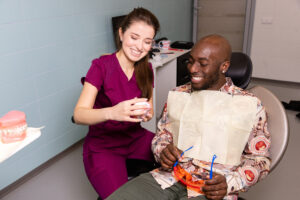To understand Periodontal Pockets, and how they are reduced, it’s necessary to understand some simple dental anatomy.
The roots of teeth are surrounded by bone, providing a stable and secure foundation. In a periodontal healthy tooth, a probe placed at the junction of the tooth and gum will slip under the gum 1-3 mm or so. Healthy gum tissue is attached to the tooth. If plaque is allowed to accumulate around the neck of the tooth, especially between the teeth, the gum responds by becoming red, inflamed and swollen. This stage of periodontal disease is called Gingivitis, and is characterized by bleeding gums upon brushing or flossing. The tip of the probe now slips further under the gum before it stops because the gum is swollen. Plaque that collects now is more difficult to remove, because it hides under the swollen gum. Bacteria forms and grows in the pocket. Eventually loss of supporting bone can occur. The longer the pocket is left untreated, the more extensive the bone loss can be. Continual destruction of bone eventually will result in the loss of teeth. If pockets depths are reduced, you will be able to self-clean all areas of your teeth. This will help to minimize plaque and bacteria accumulation, pocket formation and new periodontal disease.
Scaling and Root Planing is the first step in pocket reduction. It is usually done by quadrant, that is upper right, upper left, and so on. A local anaesthetic can be used to ensure your comfort. Accumulated plaque, calculus and bacteria are removed from the pocket. The surfaces of the crown and root of the tooth are left as smooth as possible allowing for maximum ease and cleaning, and to inhibit the formation of new plaque and calculus. After the pockets are reduced, personal homecare will prevent them from recurring.








